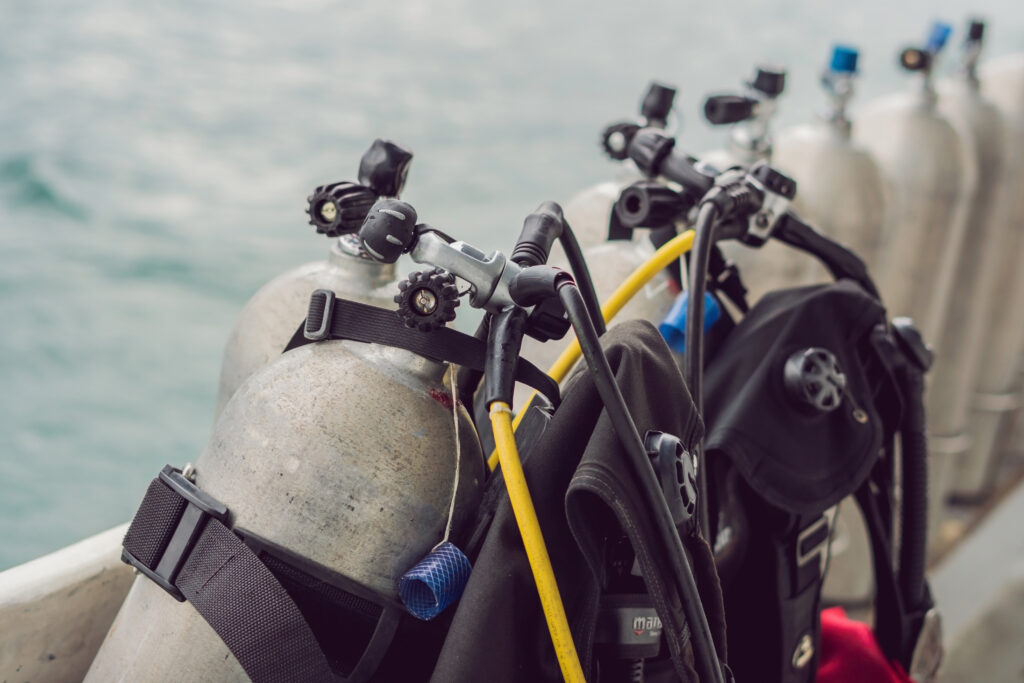
When discussing SCUBA tank breathing air, people typically focus on oxygen levels for their tanks. The amount of carbon dioxide in your SCUBA tank is something divers should consider as well. Depending on the depth or location of the dive your oxygen and carbon dioxide levels will vary. 500 ppm is said to be the maximum. Percentage wise it has been said a gas mixture or argon, CO2, nitrogen, neon, and helium 32% is recommended for SCUBA tanks. CO2 should be the highest of the remaining gases. NITROX is the blend commonly dealt with by dive instructors. The percentage should be related to the amount of oxygen in the tank. Taking your tank to a PADI dive instructor is ideal and they will have a better idea of what your specific CO2 level should be.
Adjusting the percentage of the different gas levels is important. However, there are factors that will alter the makeup of your tank gases even after adjustments. Changes in temperature can affect the makeup of the gas in your tanks. Keeping your tanks in a consistent room temperature type environment or matching the temperature of the water you are diving in prevents a change in gas composition. Heat can lead to poisoning or a tank explosion.
If you want to always be sure the CO2 levels in your tank are safe, Nitrox is a great way to ensure your air mixture is always constant. You will want to train with Nitrox so that you can prep your own tank. It’s a consistent fool-proof way to make your tank safe. Ask your instructor more about what option is your best. Keep in mind not all instructors like Nitrox. Discussing Nitrox with your doctor beforehand is recommended. Keep in mind shallow breaths are more like to result in CO2 poisoning. This can lead to hyperoxia, seizures, or passing out. Deep breaths should be practiced before going on Nitrox. If you breath shallow breaths, consider lowering the CO2 in the remaining 32% of your non oxygen gas mixture.
Gas exchange will prevent CO2 from building us into unhealthy amounts. The volume in your tank remains at a constant. Depending on how much oxygen, nitrogen, CO2, neon, and helium your body uses you may find yourself taking in a bit more CO2 after a while of using the other gases. This change in gas proportions could mean you are taking in more CO2 after a while. Changing your gas regularly will ensure that you are maintaining your proportions. Practice timing your gas usage beforehand to see how much gas you will need to take on your next dive.
Ensuring CO2 is not to low is equally important. Our CO2 levels alerts our body to breathe deeply. If it is too low, we don’t inhale enough, and cannot absorb as much oxygen. This leads to hypoxia. Breathing in deeply is even more stressed if you find yourself suffering from low oxygen levels. That's why team diving is recommended for open water outings.
Where can you get good diving tanks with a safe amount of CO2? By The Shore Scuba Instruction provides an array of diving equipment and our PADI instructors have years of experience dealing with different needs based on the type of dive, and the individual. To ensure you get the most out of your next visit, call us up, and ask what you will need for your next dive class. Tell the instructors of any health concerns you may have. This may affect how your tank gases should be arranged.



Follow Us